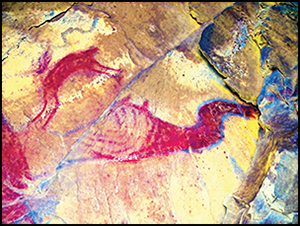Article contents
The death of a pterodactyl
Published online by Cambridge University Press: 06 August 2015
Abstract

The pictograph discovered at Black Dragon Canyon, Utah, in the late 1920s, is a classic example of the Barrier Canyon style, dating probably to AD 1–1100. Creationists, however, have argued, from the incomplete preservation of the motifs, that it depicts a winged monster or pterosaur. A new study using portable X-ray fluorescence refutes this ill-founded interpretation and reveals a scene characteristic of Barrier Canyon style, featuring an anthropomorphic figure. By removing interpretational bias, the new technology finally lays to rest the Black Dragon Canyon pterosaur.
- Type
- Research
- Information
- Copyright
- Copyright © Antiquity Publications Ltd, 2015
References
- 1
- Cited by


